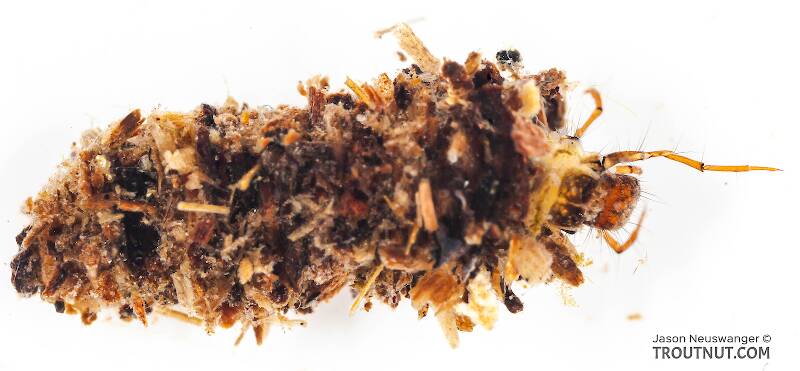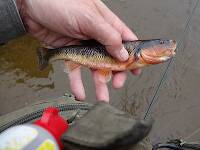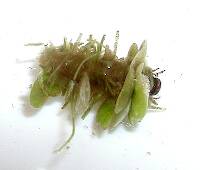
Salmonflies
Pteronarcys californica
The giant Salmonflies of the Western mountains are legendary for their proclivity to elicit consistent dry-fly action and ferocious strikes.
Featured on the forum

This is the first of it's family I've seen, collected from a tiny, fishless stream in the Cascades. The three species of this genus all live in the Northwest and are predators that primarily eat stonefly nymphs Merritt R.W., Cummins, K.W., and Berg, M.B. (2019).

Troutnut is a project started in 2003 by salmonid ecologist Jason "Troutnut" Neuswanger to help anglers and
fly tyers unabashedly embrace the entomological side of the sport. Learn more about Troutnut or
support the project for an enhanced experience here.

This one got a little bit damaged in the abdomen when I extracted it from its case. That's a delicate job.
Taxon on May 18, 2007May 18th, 2007, 10:04 am EDT
Based on the case, I would think Platycentropus. Can you see if it has prosternal horns extending beyond the head capsule to mentum of labium? See Merrit p. 375 Figure 18.191.
Troutnut on May 18, 2007May 18th, 2007, 11:25 am EDT
It doesn't. The prosternal horns only reach to the back of the head. It took about 10 minutes screwing around under a microscope to even see the prosternal horns (the whole thing is about half a centimeter long and the legs really wanted to be in the way). But I finally got a good view, and they are short, so that rules ot Platycentropus. The case seemed like a good match, though.
Jason Neuswanger, Ph.D.
Troutnut and salmonid ecologist
Troutnut and salmonid ecologist
Quick Reply
Related Discussions
Topic
Replies
Last Reply
10
Jun 21, 2014
by Johnvan61
by Johnvan61
11
Oct 18, 2012
by Entoman
by Entoman
0
Sep 23, 2006
by Litobrancha
by Litobrancha





